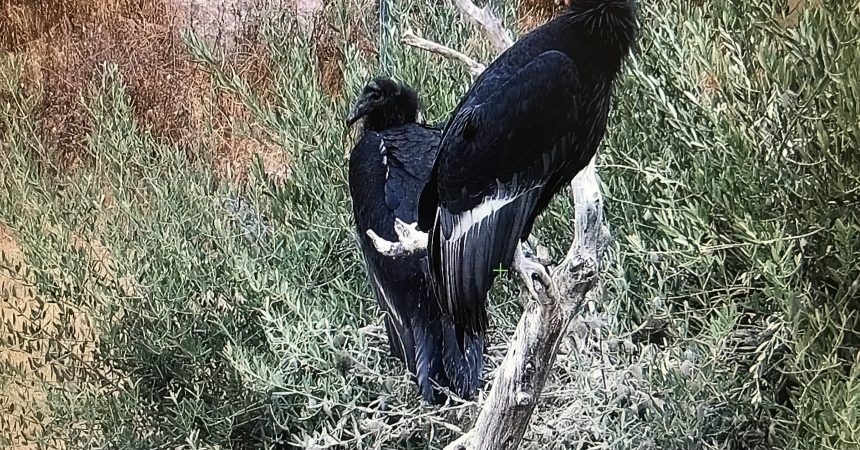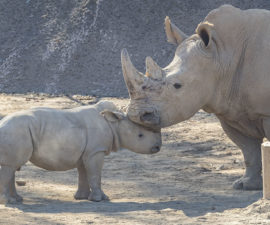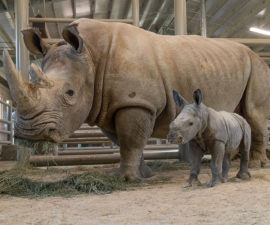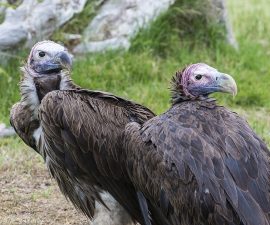Devoted Condor Cam viewers have been able to watch our California condor chick, Kitwon (pronounced “KEET-won”), hatch and grow in her nest, but lately she’s been a little harder to see, especially in the mornings and evenings. That’s because Kitwon has taken the next exciting step in her development: She has fledged!
Fledging is the process in which a young bird leaves the nest. We consider a California condor chick to be fledged when they can fly to the higher perches in the pen—approximately 10 feet off the ground. When condor chicks fledge, they tend to be around 140 or 150 days old. Kitwon flew for the first time at 141 days of age.
Our condor nest boxes are elevated—they’re on the second floor of the condor breeding facility. The nests have one entrance that leads to the roost area. The entrance has an 18-inch barrier at the base to prevent young hatchlings from wandering out of our camera’s view. This barrier also provides exercise for the chick when it is big enough to start jumping up onto the barrier. The roost area is open to the flight pen and has a ledge that is about 8 feet off of the ground. There is a 5-inch-diameter pole leaning from the ground to the ledge; we call this the “pole ladder.” The condors can walk up or down this pole ladder to get to or from the nest; they can, of course, fly to the nest if they desire, as well.
For a short time, Kitwon was able to walk down the pole ladder to start exploring the flight pen. She would watch parents Sisquoc and Shatash eat, sometimes begging for them to feed her, sometimes playing tug-of-war trying to take food from them. She also got to drink from the pool for the first time, under the watchful eyes of her parents.
In the early evening of August 18, Kitwon hopped up to an 8-foot-tall snag perch, and then made a short flight to an olive tree. She roosted in it for the night—her first night away from the nest. Sisquoc and Shatash roosted nearby. In the morning, Kitwon joined Sisquoc on a nearby perch to sun her wings in the morning sun.
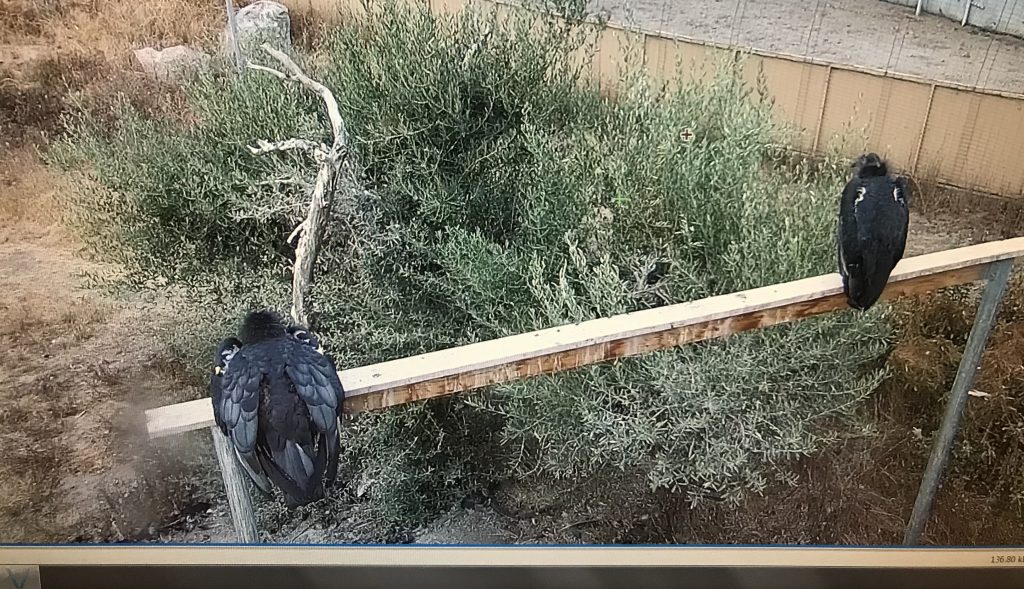
Sisquoc (left) and Kitwon sharing a perch…and quality time.
With our seasonal heat, Kitwon returns to the shade of the nest in the middle part of the day. That’s the best time to see her on Condor Cam. If she is out of view, usually in the morning or late afternoon, she is probably out in the pen strengthening her wings and learning to navigate her bigger world.
When condor chicks fledge in the wild, it can be a long process as well. They will often walk around the mouth of their nest cave, hopping about, testing their wings. They may hop or climb into nearby shrubs or trees to get a better vantage point. Very seldom do chicks just spring forth from their nest into the wild blue yonder. They usually need to exercise and develop their abilities before embarking on such a dangerous venture. Mom and dad are always present to escort or protect the chicks, too. Parent condors can be very vigilant and defensive of their chicks. After all, much energy and many resources went into producing just this one chick, so they try very hard to ensure success for their only nestling. One pair of condors in California actually chased a black bear away from their nest!
So what’s next for Kitwon? She’ll stay in the pen with her parents for a little while longer. She is still learning from them. In the wild, condor chicks stay with or around their parents for up to 18 months. We don’t let them stay that long here at the Park. If we did, the next breeding season would probably be compromised; the presence of the fledgling may prevent the parents from breeding the next year, or the parents may act aggressively toward the chick if they try to nest again. Sometime in the fall, Kitwon will be removed from her parents, so they can prepare for the next breeding season, and she will be introduced to other birds her age and an adult bird to act as a behavioral mentor. In the meantime, it will be decided whether she will be a candidate for release to the wild (and where) or held back for the captive breeding program. I’ll keep you informed when this happens. Until then, please continue to keep checking in on our big girl.
Ron Webb is a senior keeper at the San Diego Zoo Safari Park. Read his previous blog, Meet Chimborazo, the Andean Condor Chick

